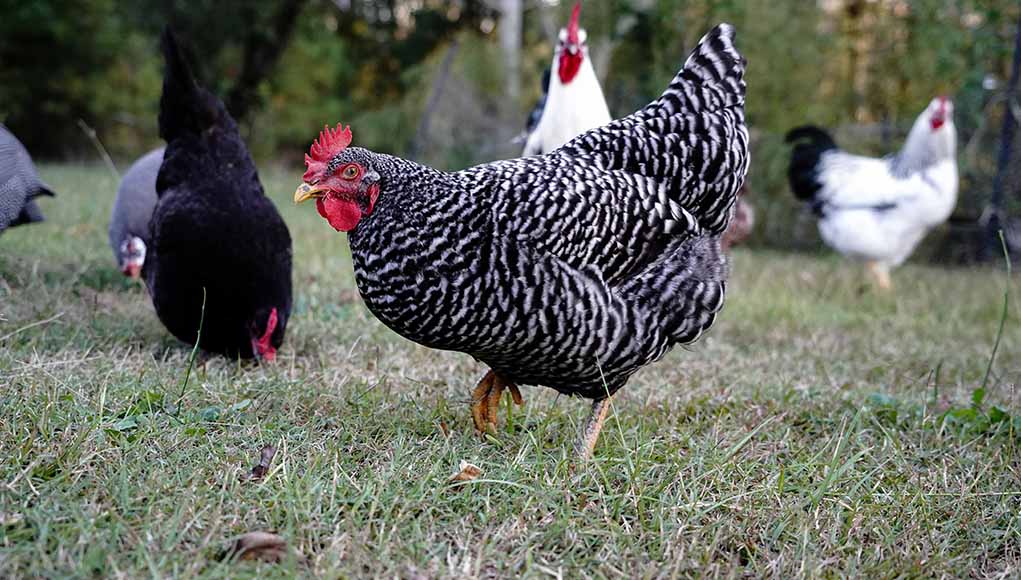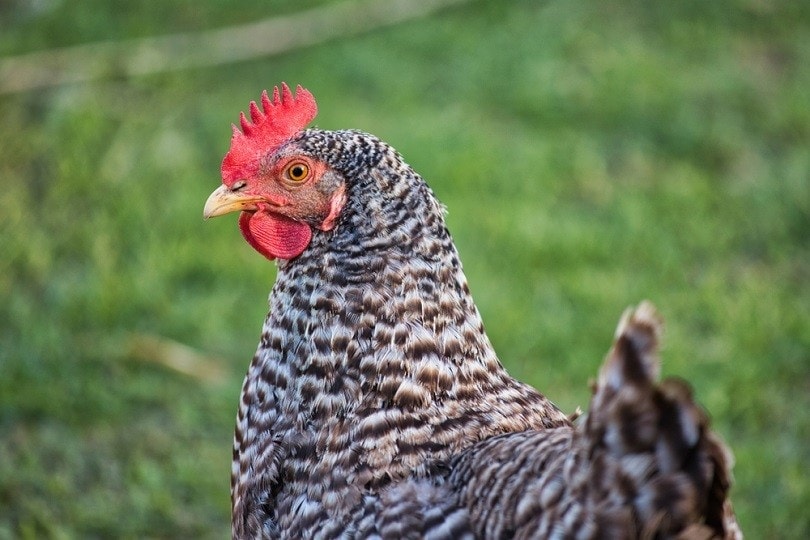Introduction
Raising chickens for over 30 years has led me to appreciate the versatile and hearty nature of the Plymouth Rock breed. Also called the Barred Rock, this chicken has a rich American history dating back to the 19th century. The breed became the backbone of America’s poultry industry, especially during World War 2. But its historical significance is only one aspect that makes this breed unique. Let’s dive into everything you need to know about the Plymouth Rock chicken.
A Brief History of the Plymouth Rock Chicken
The Plymouth Rock first appeared in Massachusetts in 1849. However, the original birds seemed to have disappeared for about 20 years. Around 1869, a breeder named Mr. Upham in Worcester, Massachusetts, started selectively breeding Barred males with Java hens, aiming for specific plumage and clean legs. It’s believed that these birds are the ancestors of today’s Plymouth Rock.
Before the end of World War 2, these chickens were encouraged by the U.S. Government to be kept by families, as they were a vital source of meat and eggs for troops. Post-war, the breed was somewhat overlooked due to the mechanization of the poultry industry but has recently seen a resurgence thanks to the growing interest in backyard chickens.
Plymouth Rock Breed Characteristics
| Characteristic | Information |
|---|---|
| Origin | United States |
| Lifespan | 6-8 years |
| Friendly for beginners? | Yes |
| Primary Use | Dual-Purpose (Egg Laying, Meat) |
| Weight (Female) | 6.5-7.5 lbs |
| Weight (Male) | 8-9 lbs |
| Egg Color | Brown |
| Egg Size | Large |
| Eggs Per Year | 200-280 |
| Temperament | Docile, Friendly |
| Broodiness | Occasionally |
| Climate Tolerance | All Climates |

Recognized Varieties
- U.S.: Barred, Blue, Buff, Colombian, Partridge, Silver Penciled, and White.
- Great Britain: Barred, Black, Buff, Colombian, and White.

Egg Production and Temperament
- Egg-laying: Respectable 200-280 large brown eggs per year. While the productivity starts declining after year 3, some hens lay well into their 10th year.
- Broodiness: While not extremely broody, broodiness can be encouraged, and they make great mothers.
- Temperament: Known for their sweet, calm, and docile nature, Plymouth Rocks are good with children and families.
Health and Lifespan
- Plymouth Rocks generally have a strong genetic pool and are resistant to many common poultry diseases.
- Roosters might need attention for their large combs during harsh winters.
- Lifespan typically ranges from 10-12 years, with some living up to 20 years!
Why Choose Plymouth Rock Chickens?
Pros:
- Adaptable: Well-suited for both free-range and confined settings.
- Dual-Purpose: Excellent for both meat and eggs.
- Beginner-Friendly: Hardy and low-maintenance.
- Quiet But Social: They are generally quieter compared to other breeds but enjoy socializing.
Cons:
- Size: Their large size may require more space and food.
- Mild Decline in Egg Production: Egg-laying decreases after the first couple of years, although it remains decent.
How to Care for Plymouth Rocks
- Housing: At least 2-3 square feet per bird inside the coop and 8-10 square feet in an outdoor run.
- Diet: Balanced diet that includes layer feed for egg-laying hens and meat bird feed for those raised for meat.
- Health: Keep up with vaccinations and regular deworming.
In Summary
Plymouth Rocks have seen a decline but also a remarkable comeback, driven by their versatility and the renewed interest in dual-purpose, backyard chickens. From the old dual-purpose type that our grandparents might have had to the high-production industrial types and even exhibition birds, Plymouth Rocks have something for everyone. They are truly American heritage birds that deserve a place on any farm.




Leave a Comment